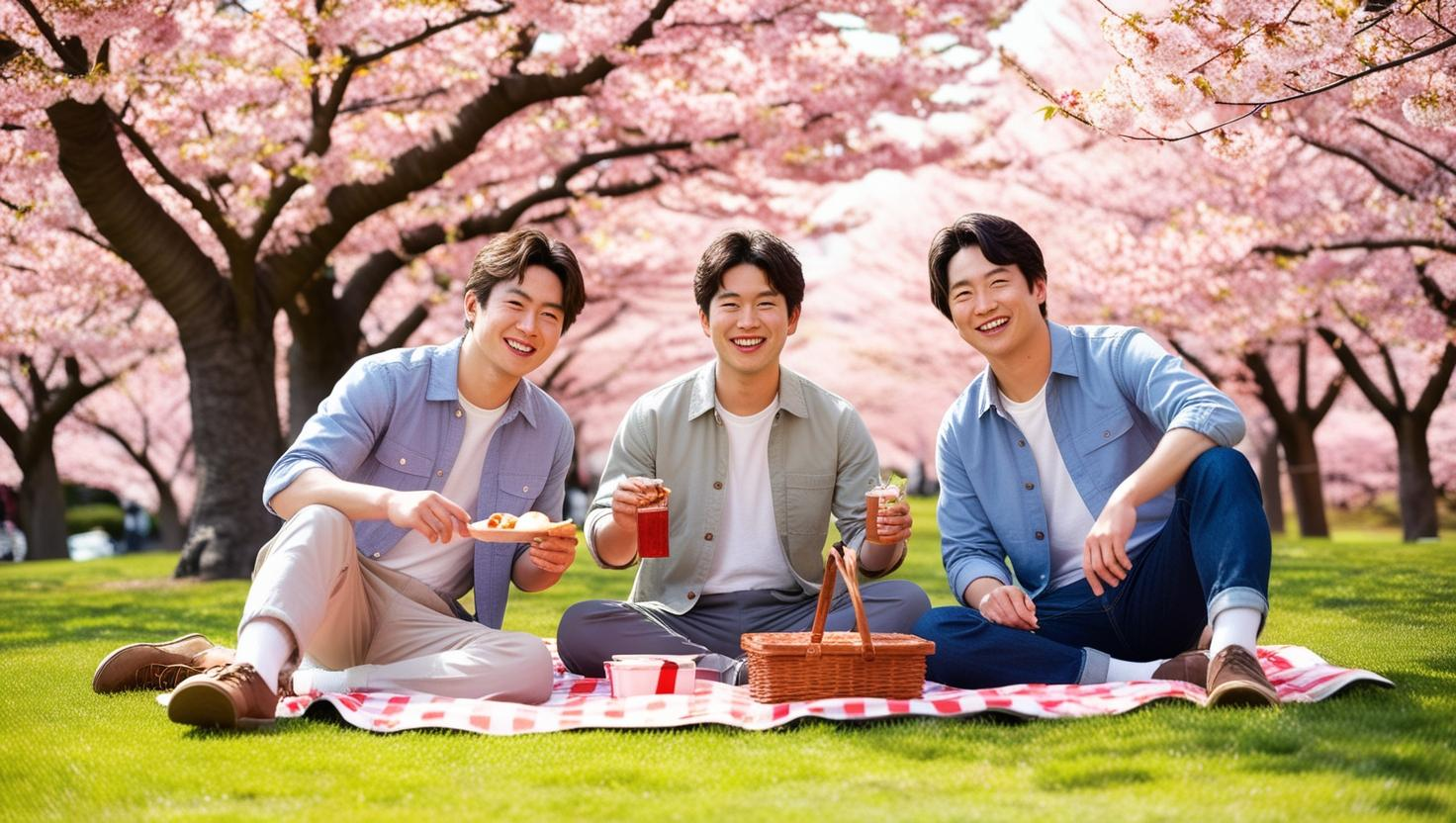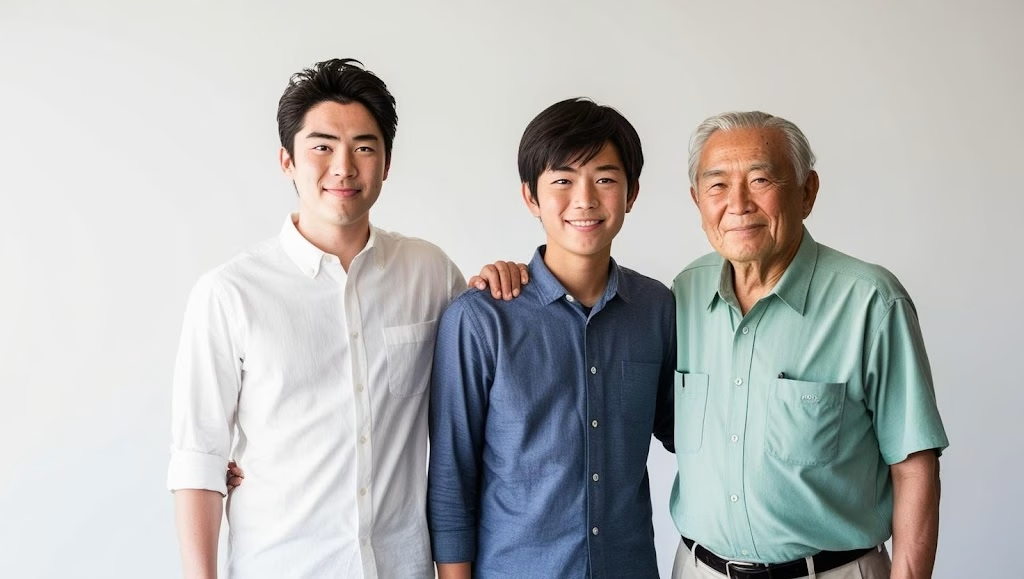Koromogae is a tradition rich in meaning in Japanese culture, involving changing clothes according to the changing seasons. The koromogae tradition is not just about changing clothes, but also reflects the Japanese people’s sensitivity to changes in nature and their relationship with the cycle of life. In this article, we will explore various aspects of the koromogae tradition, including its history, meaning, and role in everyday Japanese life.
History of Koromogae
The koromogae tradition can be traced back to the Heian period (794-1185 AD). During this time, wearing different clothes for each season became very important in aristocratic life. On the first day of the fourth and tenth lunar months, clothing and interior furnishings were changed according to the season. This celebration was a seasonal custom to mark the arrival of the new season.
During the Edo period (1603-1868 CE), the koromogae tradition became increasingly popular among the general public. Around the 17th century, the Tokugawa shogunate made it a rule for the samurai class to change their clothing four times a year, and during this period commoners also began to follow this practice, although with variations in the type of clothing and frequency of changes.
In 1873, with the introduction of Western dress and the Gregorian calendar in Japan, the Meiji government changed the rules for koromogae – which was held twice a year for civil servants, in June and October. Since then, the koromogae tradition has remained a traditional custom in the home and workplace for uniformed workers and students.
Japanese people living in Hokkaido, which is in the north of Japan, perform the Koromogae tradition two weeks later than usual because Hokkaido is colder than Tokyo. On the other hand, Japanese people living in Okinawa, which is in the south of Japan, perform the Koromogae tradition one month earlier. Although the Koromogae tradition is not enforced, students and workers who wear uniforms perform Koromogae after the transition period.
Japan's climate varies by season and region. Therefore, the koromogae tradition is rational and necessary. By changing the clothes and objects used, the scenery inside and outside the house changes. The Japanese are said to enjoy each season by not only wearing different clothes but also seeing the changes around them.

Cultural Significance of Koromogae
The Koromogae tradition is more than just a change of clothes; it has a deeper meaning related to the cycle of life and nature. In Japanese culture, each season has its own symbolism. Spring represents birth and growth, summer represents vibrancy and life, autumn represents the transience of life, while winter represents serenity and reflection.
When someone performs the koromogae tradition, they are not only changing their clothes but also remembering their connection to nature. This shows respect for the changing seasons and acknowledges the continuing cycle of life. This activity is also often accompanied by certain rituals or customs, such as cleaning the house or celebrating festivals related to the season.
Koromogae in Everyday Life
In everyday life, koromogae remains an important practice, especially among families who hold on to tradition. Typically, as the seasons change, koromogae is an opportunity to tidy up and sort things, and a time to reflect on and appreciate their own style and taste in fashion. It is a joyful and warm moment, where they can share stories and memories while choosing clothes for the coming season.
Children are often the center of attention in the koromogae tradition, especially as they reach the age where they begin wearing kimono for the first time. In this context, parents teach their children about the importance of tradition, aesthetics, and respect for nature. In addition, the process of choosing clothing can also be an opportunity for families to introduce children to deeper values, such as gratitude and modesty.
Koromogae is particularly well-known in Japanese schools, businesses, and administration, where it marks the change of uniforms. Japanese people change out of their winter uniforms for summer ones on June 1st. And the reverse process takes place on October 1st. However, these dates can vary depending on the region and local weather conditions. For example, Hokkaido, with its colder climate, may adjust the Koromogae dates differently than Kyushu, which enjoys a milder climate.
Today, the Koromogae tradition continues to be an important practice in Japan. Employees, often called office workers, adjust their clothing accordingly. They change from long-sleeved shirts to short-sleeved shirts and vice versa, depending on the season. Although Koromogae is always observed, the dates and practices can be adjusted based on current weather conditions. This reflects the adaptability of this ancient tradition to contemporary realities.
Koromogae's Influence in Art and Literature
Koromogae also has a strong influence on Japanese art and literature. Many poets and artists were inspired by the changing seasons and how it was reflected in the clothing people wore. For example, haiku poems often describe the changing beauty of nature and how it relates to the human experience.
In visual arts, Japanese painters often depict women wearing kimonos in colors that reflect the seasons. These works not only show the beauty of the clothing, but also depict the moods and feelings that arise with the changing seasons. This symbolizes the close relationship between humans and nature, and how culture blends with aesthetic beauty.
Koromogae in Festivals and Celebrations
There are many festivals and celebrations in Japan that are related to koromogae. For example, in early spring, the Hanami festival is celebrated to view the cherry blossoms in full bloom. At the same time, many people perform koromogae to change their clothes into bright colors that reflect the awakening of life. Likewise, when autumn comes, the Momiji festival is held to celebrate the beauty of the changing leaves, and many people wear clothes that match the mood of the season.
During the New Year celebration, koromogae is also an important moment where people wear new kimonos as a symbol of hope and good fortune for the coming year. This shows that koromogae is not only about aesthetics, but also about hopes and prayers for the future.
Conclusion
Koromogae is an integral part of Japanese culture that reflects the close relationship between humans and nature. By performing koromogae, Japanese people not only change their clothes, but also celebrate the cycle of life, honor the changing seasons, and maintain traditions that have existed for centuries. Through koromogae, they remind themselves of the beauty and diversity of nature, as well as the values passed down from generation to generation.
In this modern era, even though many aspects of life have changed, koromogae is still practiced by many people in Japan, especially among those who value tradition. This shows that even though the world continues to develop, there are cultural values that remain relevant and important to maintain. With koromogae, the Japanese people can continue to celebrate the beauty of each season and maintain a deep connection with nature and their culture.

















